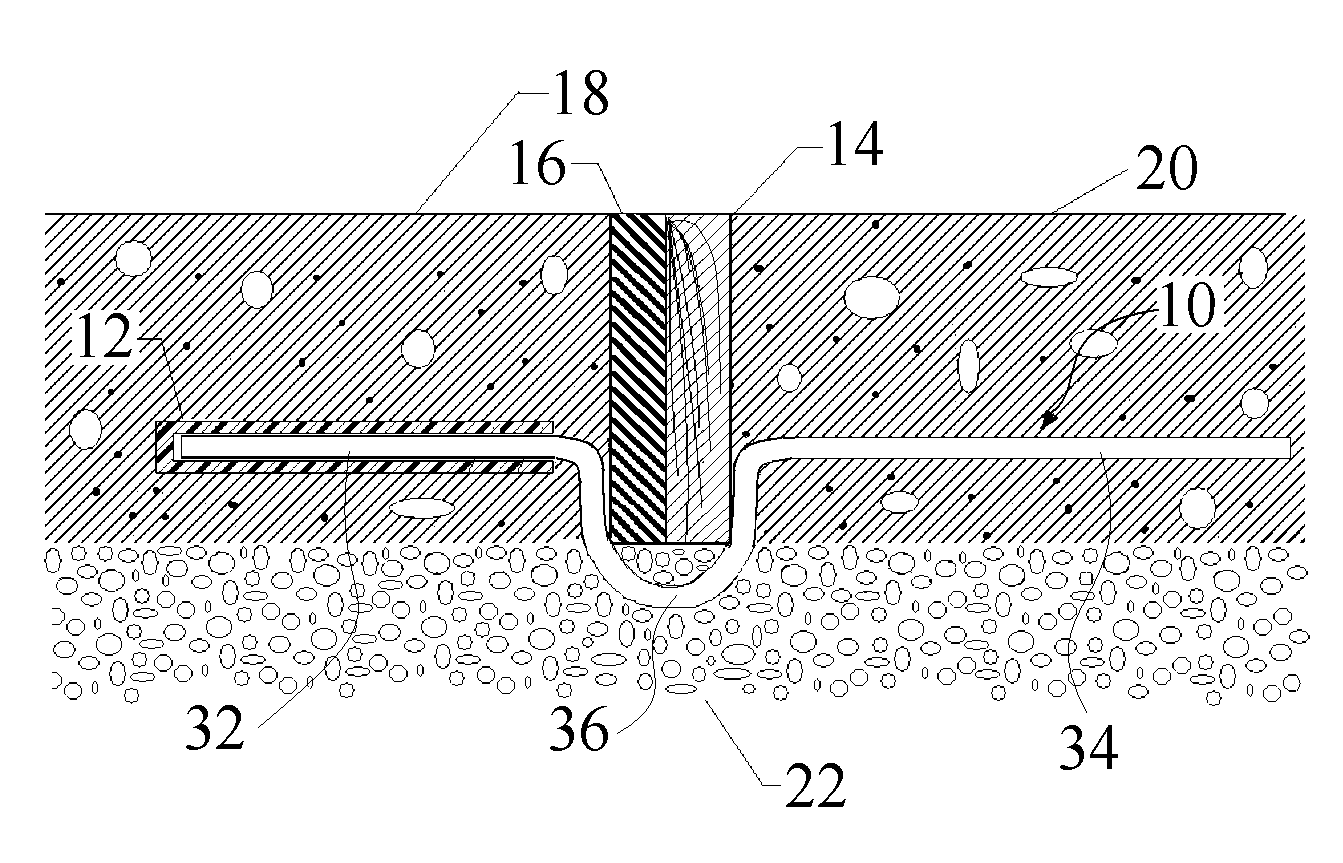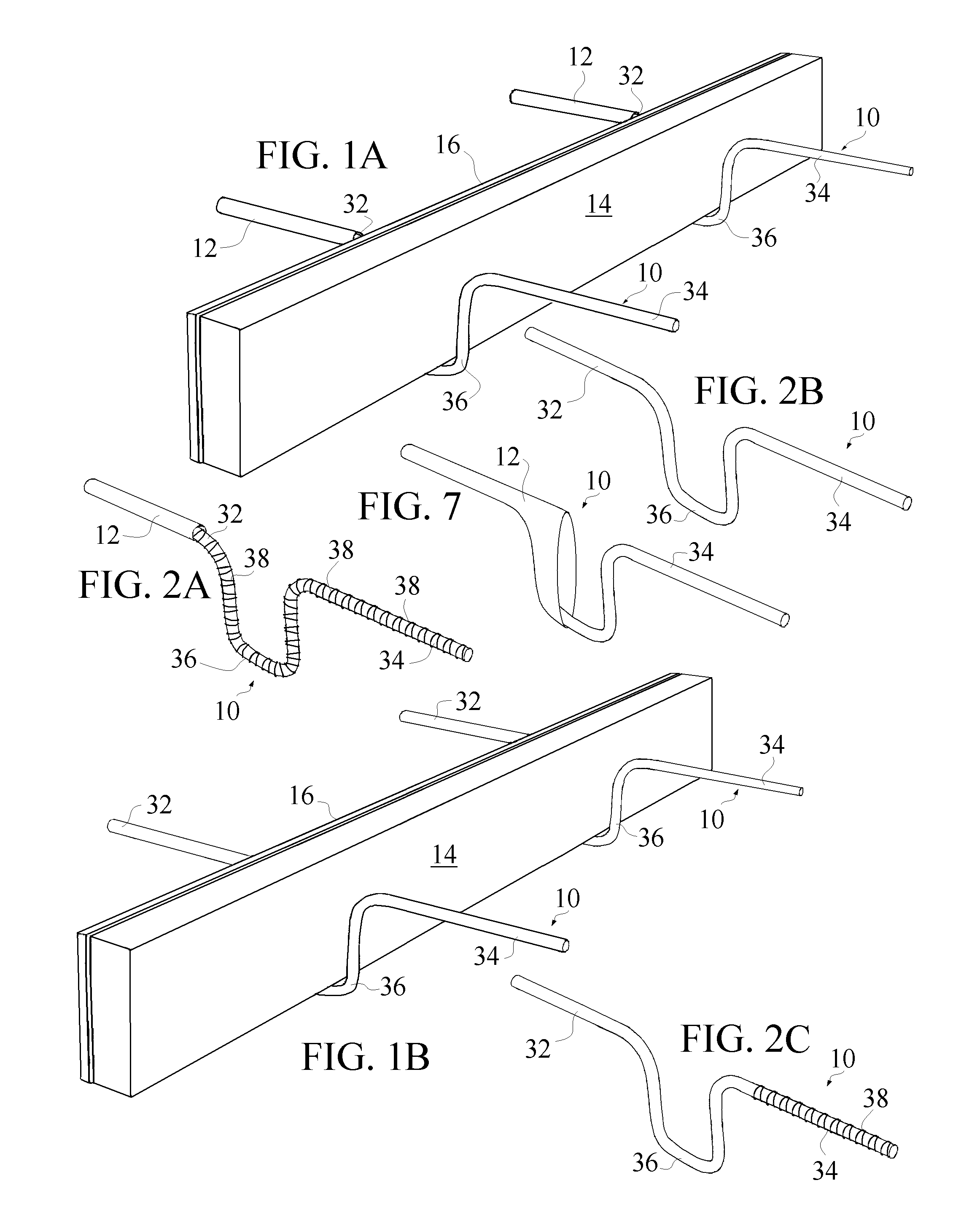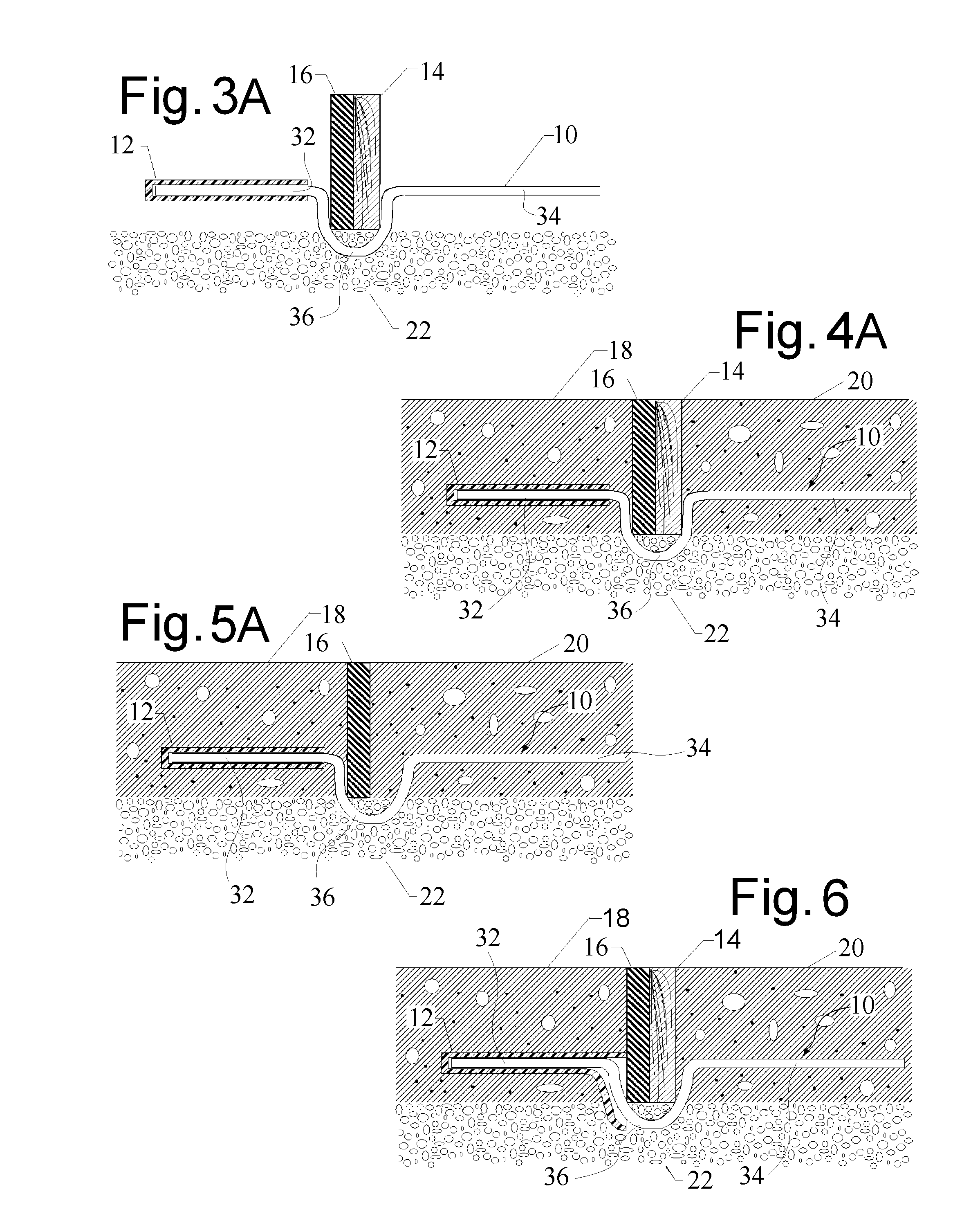Continuous pour concrete slip dowel
- Summary
- Abstract
- Description
- Claims
- Application Information
AI Technical Summary
Benefits of technology
Problems solved by technology
Method used
Image
Examples
Embodiment Construction
[0043]In summary, the present invention relates to a continuous pour concrete slip dowel 10 which is disclosed configured for use across a joint, such as an expansion joint having an expansion member 16 between adjacent concrete slabs 18 and 20. The construction of the expansion member 16 is known in the art, but generally is formed of a rubber or other elastomeric material, or a composite of several materials, and configured to accommodate slab expansion and withstand the operating environment.
[0044]The continuous pour concrete slip dowel 10 of the invention includes a sliding mechanism that is associated with, at least, a first rod end 32 of the dowel 10 to provide a sliding relationship between the first rod end 32 and the concrete slab 18 on the first side of the joint formed by member 16.
[0045]In one embodiment of the present invention shown in FIGS. 1A, 2A, 3A, 4A, 5A, 6 and 7, the sliding mechanism is formed by a slip sleeve 12 configured to be positioned within the first con...
PUM
 Login to View More
Login to View More Abstract
Description
Claims
Application Information
 Login to View More
Login to View More - Generate Ideas
- Intellectual Property
- Life Sciences
- Materials
- Tech Scout
- Unparalleled Data Quality
- Higher Quality Content
- 60% Fewer Hallucinations
Browse by: Latest US Patents, China's latest patents, Technical Efficacy Thesaurus, Application Domain, Technology Topic, Popular Technical Reports.
© 2025 PatSnap. All rights reserved.Legal|Privacy policy|Modern Slavery Act Transparency Statement|Sitemap|About US| Contact US: help@patsnap.com



